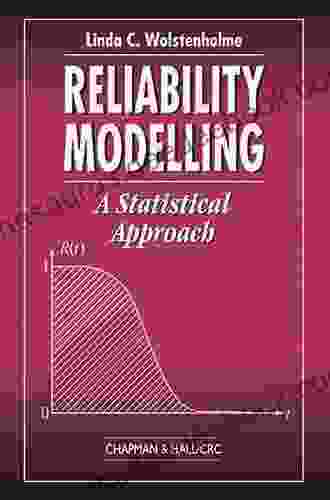Reliability Modelling: A Comprehensive Statistical Approach

Understanding the reliability of systems and components is crucial in various fields, including engineering, manufacturing, and healthcare. Reliability modelling provides a framework for assessing the likelihood of failure and predicting the expected lifespan of these systems. This comprehensive guide explores the statistical approaches employed in reliability modelling, providing a deep understanding of its concepts, methods, and applications.
Reliability modelling focuses on the analysis and prediction of failures within systems and components. It utilizes statistical techniques to model the distribution of time-to-failure, which helps estimate the probability of failure at any given point in time. The basis of reliability modelling is the assumption that failures follow a specific statistical distribution that can be characterized using parameters such as the mean, standard deviation, and shape factor.
The selection of an appropriate statistical distribution is fundamental in reliability modelling. Common distributions used include:
4.3 out of 5
| Language | : | English |
| File size | : | 33298 KB |
| Screen Reader | : | Supported |
| Print length | : | 272 pages |
- Weibull Distribution: Suitable for modelling failures that exhibit a characteristic "bathtub" curve, with early failures followed by a constant hazard rate and eventual wear-out failures.
- Exponential Distribution: Assumes a constant hazard rate, indicating that the probability of failure is independent of time.
- Normal Distribution: Models failures that follow a bell-shaped curve, often used for systems with random or Gaussian failure patterns.
- Lognormal Distribution: Describes failures that occur over an extended period, with a skewed distribution towards longer lifetimes.
Hazard rate (λ) and failure rate (r) are key measures in reliability modelling. The hazard rate represents the instantaneous rate of failure at a specific time, while the failure rate indicates the average number of failures per unit time. Both parameters provide insights into the likelihood of failure and are used to estimate the expected lifespan of systems and components.
Reliability functions are mathematical expressions that describe the probability of a system or component operating without failure over a given time interval. Common reliability functions include:
- Reliability Function (R(t)): Indicates the probability of failure-free operation until time t.
- Cumulative Failure Function (F(t)): Represents the probability of failure occurring by time t.
- Survival Function (S(t)): Indicates the probability of continued operation or survival beyond time t.
Parameter estimation is essential in reliability modelling to determine the parameters of the chosen statistical distribution. Common methods include:
- Method of Moments: Utilizes sample data to estimate the mean and standard deviation of the distribution.
- Maximum Likelihood Estimation: Selects parameters that maximize the likelihood of observing the sample data.
- Bayesian Estimation: Combines prior knowledge with sample data to estimate parameters.
Reliability modelling finds applications in various domains:
- Engineering: Assessing the reliability of aircraft, automobiles, and electronic systems.
- Manufacturing: Predicting the lifespan of products and optimizing maintenance schedules.
- Healthcare: Evaluating the reliability of medical devices and determining replacement intervals.
- Risk Analysis: Quantifying the risks associated with hazardous events and developing mitigation strategies.
- Insurance: Setting premiums based on the estimated reliability of insured assets.
Reliability modelling provides a powerful statistical approach to understanding the likelihood of failures and predicting the expected lifespan of systems and components. By utilizing statistical distributions, hazard rates, failure rates, and reliability functions, engineers and scientists can assess the reliability of various systems and make informed decisions regarding maintenance, replacement, and risk management strategies. This comprehensive guide provides a thorough foundation for understanding the concepts, methods, and applications of reliability modelling, enabling professionals to make data-driven decisions and improve the overall reliability of their systems.
4.3 out of 5
| Language | : | English |
| File size | : | 33298 KB |
| Screen Reader | : | Supported |
| Print length | : | 272 pages |
Do you want to contribute by writing guest posts on this blog?
Please contact us and send us a resume of previous articles that you have written.
 Book
Book Text
Text Genre
Genre Reader
Reader Library
Library E-book
E-book Magazine
Magazine Paragraph
Paragraph Bookmark
Bookmark Shelf
Shelf Glossary
Glossary Bibliography
Bibliography Foreword
Foreword Preface
Preface Synopsis
Synopsis Annotation
Annotation Footnote
Footnote Manuscript
Manuscript Codex
Codex Tome
Tome Bestseller
Bestseller Library card
Library card Biography
Biography Memoir
Memoir Reference
Reference Encyclopedia
Encyclopedia Dictionary
Dictionary Resolution
Resolution Catalog
Catalog Periodicals
Periodicals Study
Study Academic
Academic Special Collections
Special Collections Interlibrary
Interlibrary Thesis
Thesis Dissertation
Dissertation Awards
Awards Reading List
Reading List Book Club
Book Club Textbooks
Textbooks Judith Eichler Weber
Judith Eichler Weber Kristen L Depken
Kristen L Depken Odette Stone
Odette Stone Hourly History
Hourly History Timothy Barker
Timothy Barker Stewart A Baker
Stewart A Baker Giacomo Bruno
Giacomo Bruno Colleen Charles
Colleen Charles Alexa Andrews
Alexa Andrews Ron Edmonds
Ron Edmonds Michael Albertus
Michael Albertus Marilyn Nonken
Marilyn Nonken Rich Podolsky
Rich Podolsky David Steele
David Steele Ariel Landy
Ariel Landy Preshias Harris
Preshias Harris Susan Supernaw
Susan Supernaw Melissa Kelly
Melissa Kelly Genevieve Stebbins
Genevieve Stebbins David Walter
David Walter
Light bulbAdvertise smarter! Our strategic ad space ensures maximum exposure. Reserve your spot today!

 Philip BellThe Ultimate Guide to Mastering the Jazz Keyboard: A Comprehensive Method for...
Philip BellThe Ultimate Guide to Mastering the Jazz Keyboard: A Comprehensive Method for... Robert BrowningFollow ·10.3k
Robert BrowningFollow ·10.3k Truman CapoteFollow ·15.7k
Truman CapoteFollow ·15.7k Brody PowellFollow ·13.4k
Brody PowellFollow ·13.4k Nick TurnerFollow ·6.3k
Nick TurnerFollow ·6.3k Samuel WardFollow ·11.1k
Samuel WardFollow ·11.1k Ezekiel CoxFollow ·12.9k
Ezekiel CoxFollow ·12.9k Jamie BellFollow ·10.9k
Jamie BellFollow ·10.9k Yasushi InoueFollow ·18.1k
Yasushi InoueFollow ·18.1k

 Gary Reed
Gary ReedWeb to Web for Beginners: A Comprehensive Guide to...
In today's interconnected world, websites...

 Elliott Carter
Elliott CarterThe Moon Is Down: John Steinbeck's Poignant Portrait of...
In the annals of literature, John...

 Dalton Foster
Dalton FosterMark The Mechanic: The Incredible Story Of A Young...
In the vibrant realm of robotics, where...

 Fred Foster
Fred FosteriPhone 13 Pro Max User Guide: Everything You Need to Know
The iPhone 13 Pro Max...

 Rodney Parker
Rodney ParkerPope John Paul II: The Pocket Giant Who Inspired Millions
Pope John Paul II, or...
4.3 out of 5
| Language | : | English |
| File size | : | 33298 KB |
| Screen Reader | : | Supported |
| Print length | : | 272 pages |












